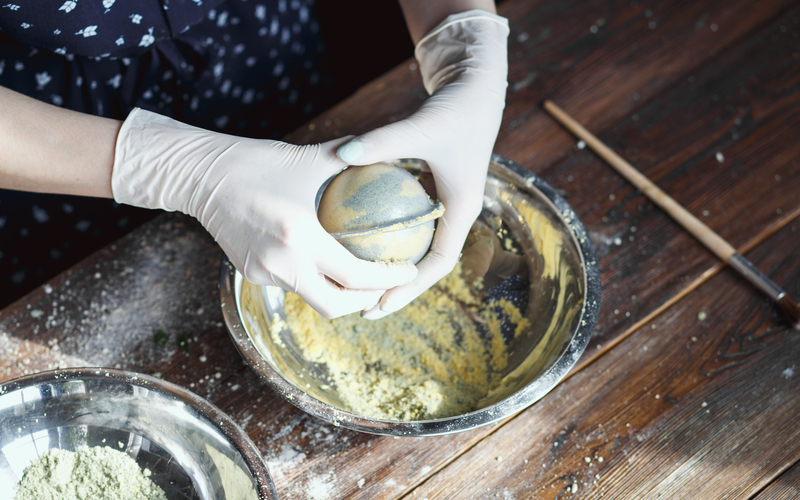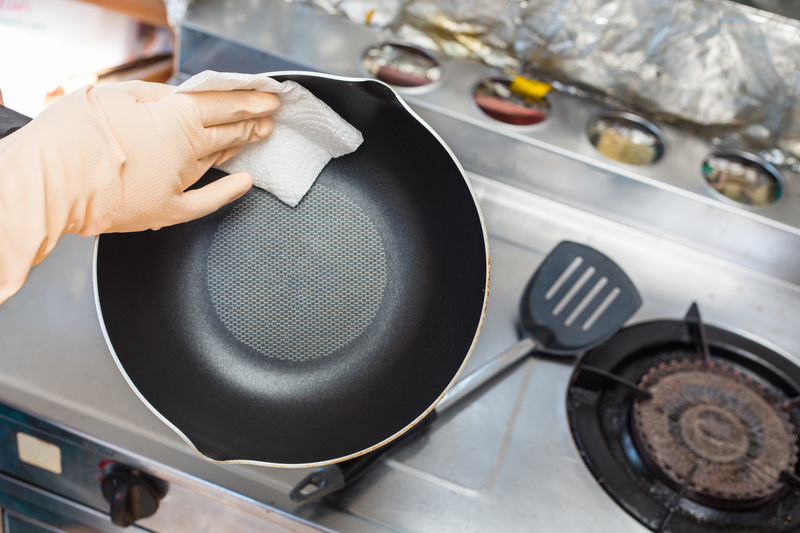Expert Tips for a Shiny Stovetop: Remove Burnt-on Residue
Posted on 22/05/2025
Expert Tips for a Shiny Stovetop: Remove Burnt-on Residue
A gleaming stovetop not only looks appealing but is an essential part of a tidy, inviting kitchen. However, burnt-on residue on a stovetop can make achieving that brilliant shine seem impossible. If you're struggling with stubborn cooked-on stains, spilled sauces, or charred food particles, you're not alone. Cooking mishaps happen to everyone, but with the right techniques, restoring your stovetop's sparkle is completely achievable.
Discover these comprehensive and expert-recommended strategies for removing burnt residue from stovetops, making regular cleaning easier, and ensuring your kitchen always looks its best.

Understanding Stovetop Surfaces: Tailor Your Approach
Before you start scrubbing, it's crucial to identify your stovetop's surface type. Different materials require unique care to avoid scratches, scuffs, or damage.
- Glass or Ceramic Induction Stovetops: Fragile against abrasives. Use non-scratch tools and gentle cleansers.
- Enamel-Coated Stovetops: More durable, but avoid hard scraping that may chip enamel.
- Stainless Steel Stovetops: Prone to streaks and scratches, respond best to soft cloths and specialized cleaners.
- Gas Stovetops with Removable Grates: Allow for deep cleaning but require attention to crevices and burner caps.
*Tip:* Consult your appliance manual if you're unsure, and always test any cleaning solution on an inconspicuous spot first.
Immediate Steps: What to Do Right After a Spill or Burn
When a spill occurs and ends up as burnt-on residue, prompt action can prevent permanent staining. Here are the steps to take:
- Turn Off and Cool Down: Safety first! Power off burners and ensure your stovetop is cool to the touch.
- Remove Loose Debris: Gently scrape away any food or residue that comes off easily, using a plastic spatula or scraper.
- Blot Excess with a Clean Cloth: Mop up liquids or sticky residue, avoiding any scrubbing that could spread the mess.
*Underlining this tip:* Dealing with spills immediately gives you the best chance at avoiding persistent, burnt stains.
Safe & Effective Cleaning Solutions for Every Stovetop
The right cleaning products make all the difference when it comes to removing cooked-on grime from stovetops. Avoid harsh chemicals that could damage surfaces or leave toxic residues.
DIY Natural Cleaners for Stovetops
- Baking Soda Paste: Mix baking soda and water into a thick paste. Spread over burnt-on spots, let sit for 15 minutes, and gently scrub.
- White Vinegar Spray: Combine equal parts white vinegar and water in a spray bottle. Spray liberally to loosen residues and cut through grease.
- Lemon Juice: The acidity in lemon juices acts as a natural degreaser and deodorizer.
Commercial Cleaners: When to Use Them
Stubborn, cooked-on food may require a specialized stovetop cleaner or degreaser, especially designed for your appliance's material. Look for:
- Non-abrasive products labeled safe for glass, ceramic, or stainless steel
- Cleaning wipes or sprays formulated for kitchen appliance use
- Ceramic cooktop stoves may benefit from dedicated creams and polishers
*Always thoroughly rinse your stovetop after applying commercial products and dry it to prevent water spots.*
Step-by-Step Process: How to Remove Burnt Residue from Stovetops
Ready to tackle your toughest stains? Here's an expert-approved step-by-step routine to obliterate even the most tenacious burnt-on gunk, while keeping your stovetop pristine.
1. Soften Stubborn Residue
- Lay a damp, hot towel over the burnt area. Let it sit for 10-15 minutes to soften & loosen residue.
- For extra stubbornness, pour a little vinegar or hot water beneath the towel for added steam action.
2. Gently Scrape with the Right Tool
- For glass stovetops, use a razor blade or ceramic stovetop scraper, held at a 45-degree angle.
- For other surfaces, choose a plastic spatula, scraper, or old credit card.
- Never use steel wool or metal pads, as they will scratch most stovetops!
3. Apply a Cleaning Solution
- Spread baking soda paste or your chosen cleaner over the burnt-on area.
- Let it sit for 10-20 minutes to allow the cleaner to penetrate and dissolve residue.
4. Scrub Gently
- Use a soft sponge, microfiber cloth, or non-scratch pad. Work in circular motions to lift away remains.
- For stubborn bits, repeat with more cleaning paste as needed.
5. Rinse and Dry
- Wipe away cleaner residue with a damp cloth, ensuring no streaks are left behind.
- Buff with a dry microfiber cloth for a truly gleaming finish.
How to Remove Burnt Stains from Gas Stovetops
Gas stovetops require extra attention due to their removable grates and burners. Here's how to deep clean them effectively:
- Remove all grates, burner caps, and knobs (if possible and safe).
- Soak them in hot soapy water for 20-30 minutes to loosen stubborn grime.
- Use a stiff brush or old toothbrush to scrub away burnt-on food residue.
- For persistent grease, create a baking soda/vinegar paste and let it fizz on problem spots before scrubbing.
- Rinse thoroughly, dry completely, and reassemble your stovetop.
Wipe down the main stovetop area using the gentle scraping and cleaning methods detailed above, making sure to avoid getting water into the burner wells.
Shining and Polishing: The Finishing Touch
Glass and Ceramic Stovetops
- After removing all stains, use a dedicated glass stovetop polish or a vinegar-water mixture for final shine.
- Buff with a microfiber cloth or paper towel to avoid streaks.
Stainless Steel Stovetops
- Use a stainless steel spray or olive oil to restore a streak-free shine.
- Always wipe in the direction of the grain for best results.
Enamel-Coated Stovetops
- Apply a mild dish soap solution, rinse thoroughly, and dry with a soft towel.
- A little shine restorer or polish can keep enamel looking fresh.
Preventing Burnt-On Residue: Easy Maintenance Habits
*An ounce of prevention is worth a pound of cure.* Here are expert maintenance tips to keep your stovetop looking pristine and make cleaning up messes much easier:
- Wipe Spills Immediately: Even just a quick pass with a damp sponge after each meal can stave off build-up.
- Use Protective Liners: Place stove liners or aluminum foil (safe for your specific model) under burners to catch drips and splatters.
- Maintain Low and Steady Heat: Avoid sudden temperature changes, which help prevent burnt spills.
- Clean Burner Elements Regularly: Especially for gas burners, regular attention prevents baked-on buildup.
- Utilize Lids and Splatter Guards: Contain spills before they burn!
Common Mistakes to Avoid When Cleaning Burnt Stovetops
- Resorting to Metal Scouring Pads: These scratch and dull surfaces, especially glass and ceramic stovetops.
- Using Undiluted Harsh Chemicals: They can corrode enamel, discolor surfaces, and leave harmful residues behind.
- Skipping a Rinse: Always remove cleaning agents thoroughly to prevent streaks or food contamination.
- Forgetting to Dry: Water spots and minerals can mar the shine you just worked so hard to restore.
Pro Tip:
Never attempt to clean a hot stovetop. Not only can it be dangerous, but chemical cleaners can evaporate quickly, leading to streaks or ineffective cleaning.
Troubleshooting: When Burnt-On Stains Still Won't Budge
Occasionally, those really tough burnt-on residues seem impervious to even the most diligent cleaning. If you're dealing with old, cooked-on stains that still refuse to budge:
- Repeat the soaking and paste cleaning method. Time and patience often do the trick.
- Try a razor blade scraper one more time, being extra gentle and keeping the area well-lubricated.
- Look for professional stovetop cleaning kits, which include heavy-duty cleansers and specialized scrapers.
- In rare cases, contact your appliance manufacturer or a professional cleaner for advice. Some stains may be permanent if the glass or enamel is damaged beneath the surface.

Frequently Asked Questions: Stovetop Cleaning Essentials
How often should I clean my stovetop to prevent burnt-on residue?
Ideally, wipe down your stovetop daily and attend to major spills immediately. Deep-clean weekly or as needed, depending on how often you cook.
Is it safe to use bleach or ammonia for stovetop cleaning?
It's generally best to avoid bleach and ammonia for standard stove cleaning. They can damage some finishes and create harmful fumes, especially when mixed with other chemicals.
What is the best tool for cleaning glass and ceramic cooktops?
A razor blade scraper (used flat and carefully) is unbeatable for glass cooktops, paired with baking soda paste or a specialized glass top cleaner. Always follow with a soft cloth to polish.
My stove still smells burnt after cleaning. What should I do?
If odors persist, wipe down all surrounding surfaces, including control knobs, and let baking soda sit on the surface overnight to neutralize smells before wiping clean.
Conclusion: Enjoy a Sparkling, Burnt-Free Stovetop!
Mastering the art of removing burnt-on residue from stovetops is all about the right knowledge, tools, and maintenance routines. With these expert stovetop cleaning tips and stain removal tricks, you'll transform even the grimiest burners into a shimmering, kitchen centerpiece. Consistency is key, so add these habits to your regular kitchen tidy-up, and say goodbye to burnt-on stains for good.
Remember to:
- Choose gentle cleaners tailored to your stovetop type
- Act quickly on spills to prevent permanent stains
- Use non-abrasive tools for safe scrubbing
- Rinse and dry thoroughly for a professional-grade shine
A shiny, spotless stovetop is possible with the right approach -- and your kitchen will thank you for it!





